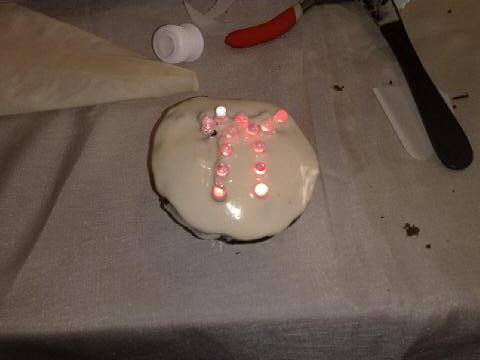Pi or cake? A geeky class in electronic cupcakes
A few weeks ago I taught a cupcake hacking class. This class was primarily based on how to electrify your cake without poisoning your friends. The first rule of thumb is to use lead-free solder. We all know soldering with it is a bitch, but piece of mind that you won’t fill your friends with toxins is well worth it. Lead free solder is mostly tin (approximately 95ish%). Other elements in lead-free solder are not exactly healthy to consume, but we take other measures to ensure it doesn’t touch the cake anyhow. The elements found in lead-free solder are as follows: tin, copper, bismuth, zinc, antimony, and indium. The Los Alamos Chemistry Laboratory gives a good overview of elements and their everyday uses. After you have your LEDs, motors, peizos, and other electronic parts soldered together, you’ll want to coat any exposed wires and solder with wax, regular parafin wax, because having wax touch your cake is safer than metal! I like to take extra measures with my cakes and also line the electronics with saran wrap and parchment paper. The battery should always be outside the cake. If you notice the battery leaking acid, for god sakes don’t eat the cake!! Niki, a student in my class made the LED pi cupcake shown above; a cupcake with an identity crisis.
Some resources to learn more about lead free solder and chemical properties of solder are:
More geek-filled electronic cakes can be found on my flickr!

[…] Newz Today wrote an interesting post today onHere’s a quick excerpt A few weeks ago I taught a cupcake hacking class. This class was primarily based on how to electrify your cake without poisoning your friends. The first rule of thumb is to use lead-free solder. We all know soldering with it is a bitch, but piece of mind that you won’t fill your friends with toxins is well worth it. Lead free solder is mostly tin (approximately 95ish%). Other elements in lead-free solder are not exactly healthy to consume, but we take other measures to ensure it doesn’t […]